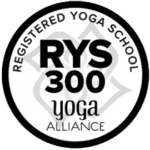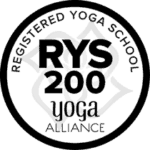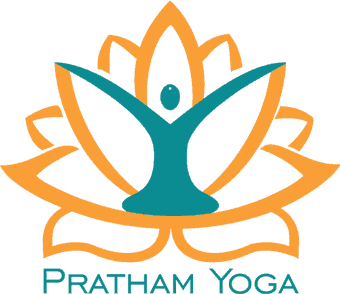Exploring Paschimottanasana: Benefits, Variations, and Practice with Pratham Yoga
Paschimottanasana, a fundamental yoga posture, embodies the essence of flexibility, balance, and inner calm. Rooted in centuries-old traditions, its practice holds immense physical, mental, and spiritual significance. At Pratham Yoga, we delve into the depths of Paschimottanasana, unraveling its history, variations, benefits, and precautions to ensure a holistic understanding of this transformative asana.
History of Paschimottanasana
Paschimottanasana finds its roots in ancient yogic texts like the Hatha Yoga Pradipika and the Gheranda Samhita. Its name originates from Sanskrit, where “Paschima” translates to the west and “Uttana” means intense stretch. Historically, this pose was practiced to stimulate the energy flow along the spinal column, aiding in meditation and spiritual awakening.
What is Paschimottanasana?
Paschimottanasana is a seated forward bend, where the practitioner extends their torso over their outstretched legs, aiming to touch the forehead to the knees. This asana primarily engages the posterior chain, promoting a deep stretch along the spine, hamstrings, and calves. It encourages introspection and relaxation while enhancing flexibility and circulation.
Variations of Paschimottanasana
1. Basic Paschimottanasana
This is the foundational version where practitioners sit with their legs extended and fold forward at the hips, reaching towards their feet. It is an excellent stretch for the entire back and hamstrings.
2. Paschimottanasana with Blocks
Introducing blocks under the hands helps elevate beginners’ hands, reducing strain and making the stretch more accessible. This modification allows individuals with limited flexibility to gradually progress in the pose.
3. Paschimottanasana with Straps
Utilizing yoga straps around the feet provides support for individuals with tight hamstrings. The straps allow practitioners to maintain proper alignment while gradually increasing flexibility over time.
4. Seated Side Bend Variation
This variation involves reaching to one side while maintaining the seated position, intensifying the stretch along the side body. It adds a lateral movement element, enhancing the overall flexibility benefits of the pose.
5. One-Leg Paschimottanasana
By folding over one extended leg while bending the other knee, practitioners can isolate and deepen the stretch on one side at a time. This variation is excellent for targeting imbalances in flexibility.
6. Revolved Paschimottanasana
Incorporating a twist into the forward fold enhances the pose’s benefits by engaging the spine and obliques. This variation adds a rotational element, promoting spinal mobility and a deeper stretch.
7. Advanced Arm-Bind Variation
For seasoned practitioners, an arm-bind variation involves clasping the hands behind the back in the forward fold. This intensifies the shoulder and chest opening aspects of the pose, offering a more advanced challenge.
8. Urdhva Mukha Paschimottanasana (Upward-Facing Forward Bend)
This advanced variation incorporates lifting the torso while in the forward fold, creating a backbend element. It provides a comprehensive stretch for the spine, shoulders, and hamstrings, requiring both flexibility and strength.
Paschimottanasana, with its various modifications and advanced variations, caters to practitioners at different levels. Whether using props for support, incorporating twists, or adding dynamic elements, these variations ensure that individuals can tailor the pose to their specific needs and gradually progress in their yoga practice.
Benefits of Paschimottanasana
1. Spinal, Hamstring, and Calf Stretch
Paschimottanasana is renowned for its profound impact on the physical body. The forward fold stretches the spine, hamstrings, and calves, enhancing flexibility and contributing to better posture. This elongation promotes overall spinal health.
2. Abdominal Stimulation for Digestion
The pose stimulates the abdominal organs, particularly the digestive organs. This stimulation aids digestion, helping in the efficient processing of food and absorption of nutrients. It also contributes to the regulation of metabolism.
3. Improved Flexibility and Posture
Regular practice of Paschimottanasana leads to increased flexibility in the spine, hamstrings, and calf muscles. The improved flexibility translates into enhanced overall posture, promoting a more aligned and balanced stance.
4. Stress Alleviation and Mental Calm
Beyond the physical benefits, Paschimottanasana extends its advantages to mental well-being. The forward fold has a calming effect on the mind, alleviating stress and fostering a sense of tranquility. The meditative quality of the pose contributes to mental clarity and relaxation.
Muscles Strengthened and Stretched
1. Posterior Chain Stretch
The fundamental aspect of Paschimottanasana is its focus on stretching the entire posterior chain. This includes a lengthening effect on the spine, hamstrings, and calves, promoting flexibility and relieving tension in the back body.
2. Back Muscle Strengthening
As practitioners fold forward in Paschimottanasana, the muscles along the back, especially the erector spinae, are engaged. This engagement not only enhances flexibility but also strengthens the back muscles, contributing to improved posture and spinal support.
3. Abdominal Organ Stimulation
The pose stimulates the abdominal organs, promoting better digestion. This stimulation is particularly beneficial for the digestive system, as it encourages the efficient functioning of organs like the liver and kidneys.
4. Core Engagement for Stability
Paschimottanasana requires the engagement of core muscles for stability and balance. This activation not only supports the forward fold but also strengthens the core, fostering a sense of grounding and control during the pose.
Is Paschimottanasana Good for Health?
Absolutely. Paschimottanasana contributes significantly to overall health and well-being. Regular practice improves digestion, relieves mild backaches, and reduces anxiety and fatigue. It also helps regulate blood pressure and enhances blood circulation throughout the body.
Precautions to Take Before Doing Paschimottanasana
Back Injuries and Herniated Discs
Individuals with back injuries or herniated discs should exercise caution when practicing Paschimottanasana. It’s advisable to approach the pose gently and consult with a healthcare professional or yoga instructor for modifications to avoid exacerbating existing conditions.
Hamstring Injuries
Caution is warranted for those with hamstring injuries. Modifications, such as using props or reducing the depth of the forward fold, may be necessary to prevent strain on the hamstrings. Gradual progression is key, ensuring that the stretch is within a comfortable range.
Pregnancy Considerations
Pregnant women should be mindful of the abdominal compression that can occur in Paschimottanasana. To accommodate the growing abdomen, modifying the pose by widening the legs can help alleviate pressure. Consulting with a prenatal yoga instructor is recommended for personalized guidance.
Transformative 200 Hour Yoga Teacher Training in Rishikesh
Join our 200 Hour Yoga Teacher Training Course in Rishikesh for a transformative experience. Master Paschimottanasana and foundational poses under the guidance of experienced instructors. Emphasizing alignment, breathwork, and mindfulness, this course provides a comprehensive foundation for your yoga journey.
300 Hour Yoga Teacher Training in Rishikesh
Take your yoga practice to new heights with our advanced 300 Hour Teacher Training Course in Rishikesh. Building on the 200 hour program, explore Paschimottanasana and advanced techniques for a profound and enriching yoga experience. Join us in Rishikesh to deepen your practice and teaching skills.
Paschimottanasana epitomizes the harmonious blend of physical prowess and inner tranquility. With its rich history, varied benefits, and diverse variations, this asana stands as a cornerstone in the realm of yoga. At Pratham Yoga, we honor and teach the essence of Paschimottanasana, fostering a deeper connection between mind, body, and spirit in every practitioner.


